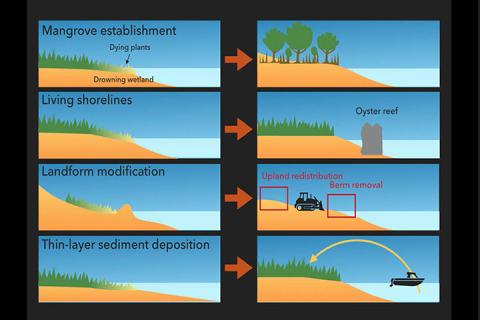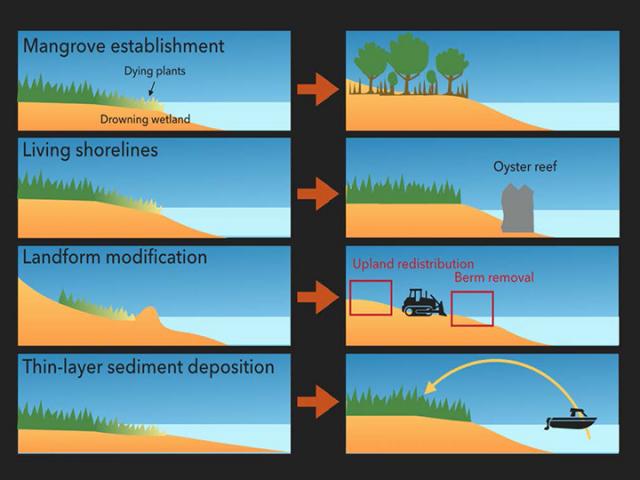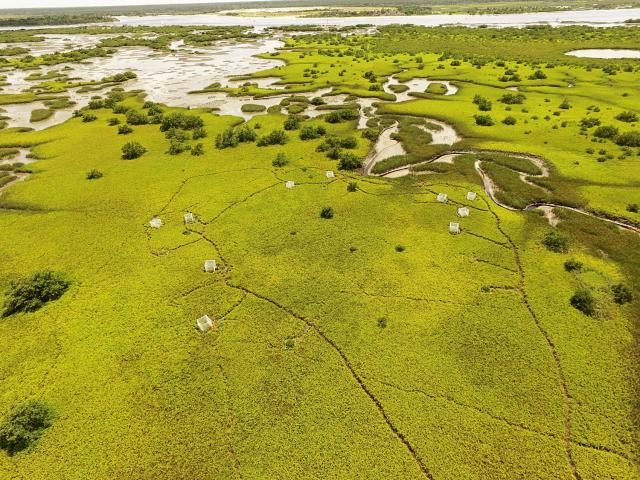
The team brought together land managers and regional scientists to share their restoration experiences and identify wetland restoration priorities, pilot sites, and techniques for use within Guana Tolomato Matanzas Reserve.
The project
Northeastern Florida and the Guana Tolomato Matanzas NERR have some of the most intact estuarine ecosystems in the southeastern United States; however, some areas are expected to need targeted management to stabilize land, protect habitat, and maintain surface elevation relative to sea level rise. To promote coastal wetland resilience, the GTM NERR land managers are prioritizing surface elevation and exploring proactive techniques for wetland restoration. This project aimed to help land managers better understand and prioritize their options for maintaining or increasing wetland surface elevation in the area’s most vulnerable sites.
This project leveraged a larger National Science Foundation funded project WETFEET and explored the effectiveness of four coastal elevation management options: (1) thin-layer sediment deposition, (2) berm redistribution, (3) living shorelines, and (4) facilitation of mangrove encroachment. The team used remote sensing and field data to develop a coastal vulnerability index assessment map for GTMNERR managers to identify sites that are most at risk of inundation and erosion. The Experimenting with Elevation project brought together regional scientists and land managers in two workshops to explore the effectiveness of coastal elevation management options and plan for targeting wetland restoration pilot projects.
The impact
- This work catalyzed a new collaborative restoration planning project occurring between the GTMNERR, University of Central Florida and Villanova University to investigate how oyster rakes are impeding flow into vulnerable wetlands, which were both identified by the coastal vulnerability index.

